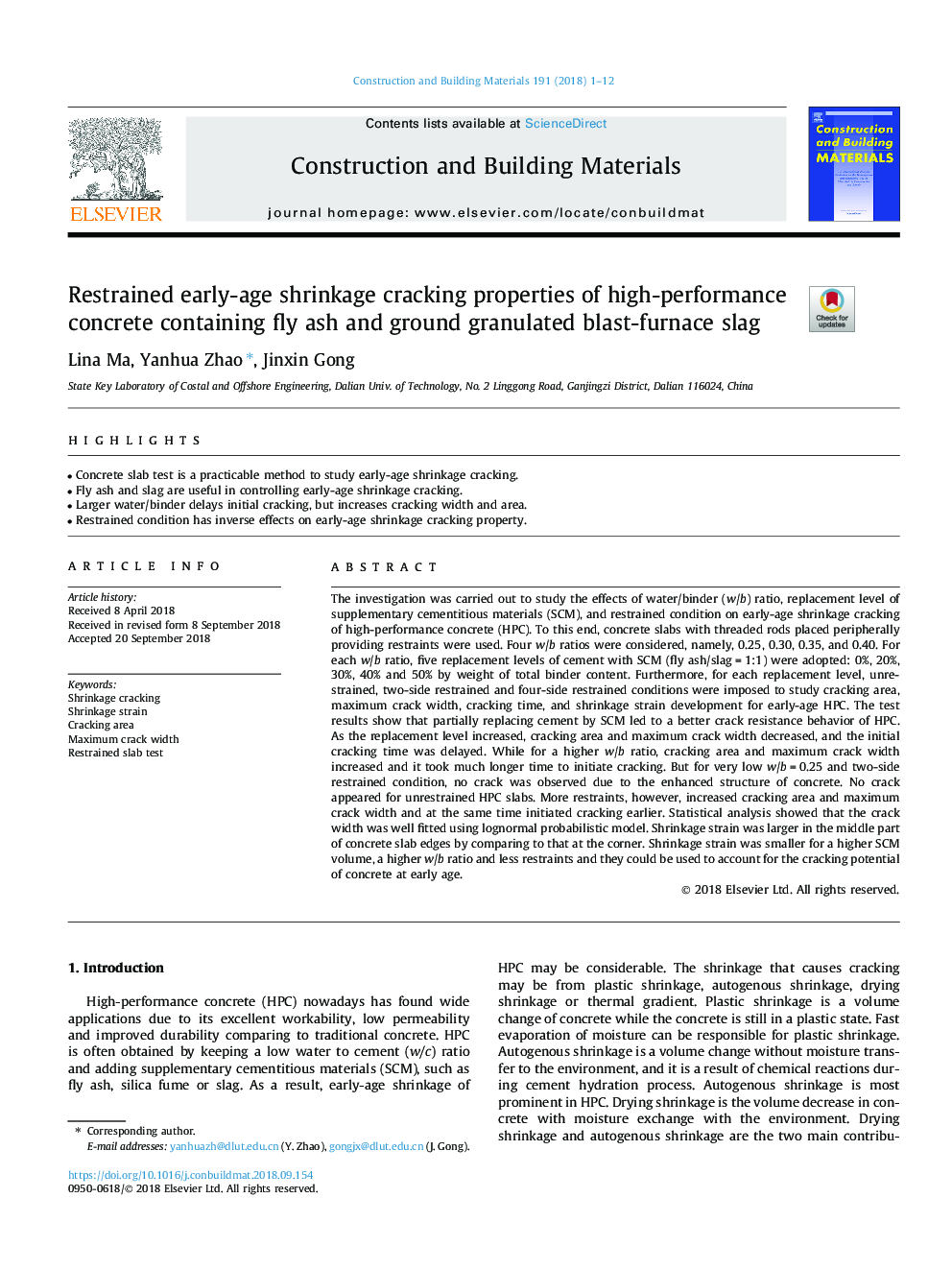| Article ID | Journal | Published Year | Pages | File Type |
|---|---|---|---|---|
| 11012603 | Construction and Building Materials | 2018 | 12 Pages |
Abstract
The investigation was carried out to study the effects of water/binder (w/b) ratio, replacement level of supplementary cementitious materials (SCM), and restrained condition on early-age shrinkage cracking of high-performance concrete (HPC). To this end, concrete slabs with threaded rods placed peripherally providing restraints were used. Four w/b ratios were considered, namely, 0.25, 0.30, 0.35, and 0.40. For each w/b ratio, five replacement levels of cement with SCM (fly ash/slagâ¯=â¯1:1) were adopted: 0%, 20%, 30%, 40% and 50% by weight of total binder content. Furthermore, for each replacement level, unrestrained, two-side restrained and four-side restrained conditions were imposed to study cracking area, maximum crack width, cracking time, and shrinkage strain development for early-age HPC. The test results show that partially replacing cement by SCM led to a better crack resistance behavior of HPC. As the replacement level increased, cracking area and maximum crack width decreased, and the initial cracking time was delayed. While for a higher w/b ratio, cracking area and maximum crack width increased and it took much longer time to initiate cracking. But for very low w/bâ¯=â¯0.25 and two-side restrained condition, no crack was observed due to the enhanced structure of concrete. No crack appeared for unrestrained HPC slabs. More restraints, however, increased cracking area and maximum crack width and at the same time initiated cracking earlier. Statistical analysis showed that the crack width was well fitted using lognormal probabilistic model. Shrinkage strain was larger in the middle part of concrete slab edges by comparing to that at the corner. Shrinkage strain was smaller for a higher SCM volume, a higher w/b ratio and less restraints and they could be used to account for the cracking potential of concrete at early age.
Keywords
Related Topics
Physical Sciences and Engineering
Engineering
Civil and Structural Engineering
Authors
Lina Ma, Yanhua Zhao, Jinxin Gong,
